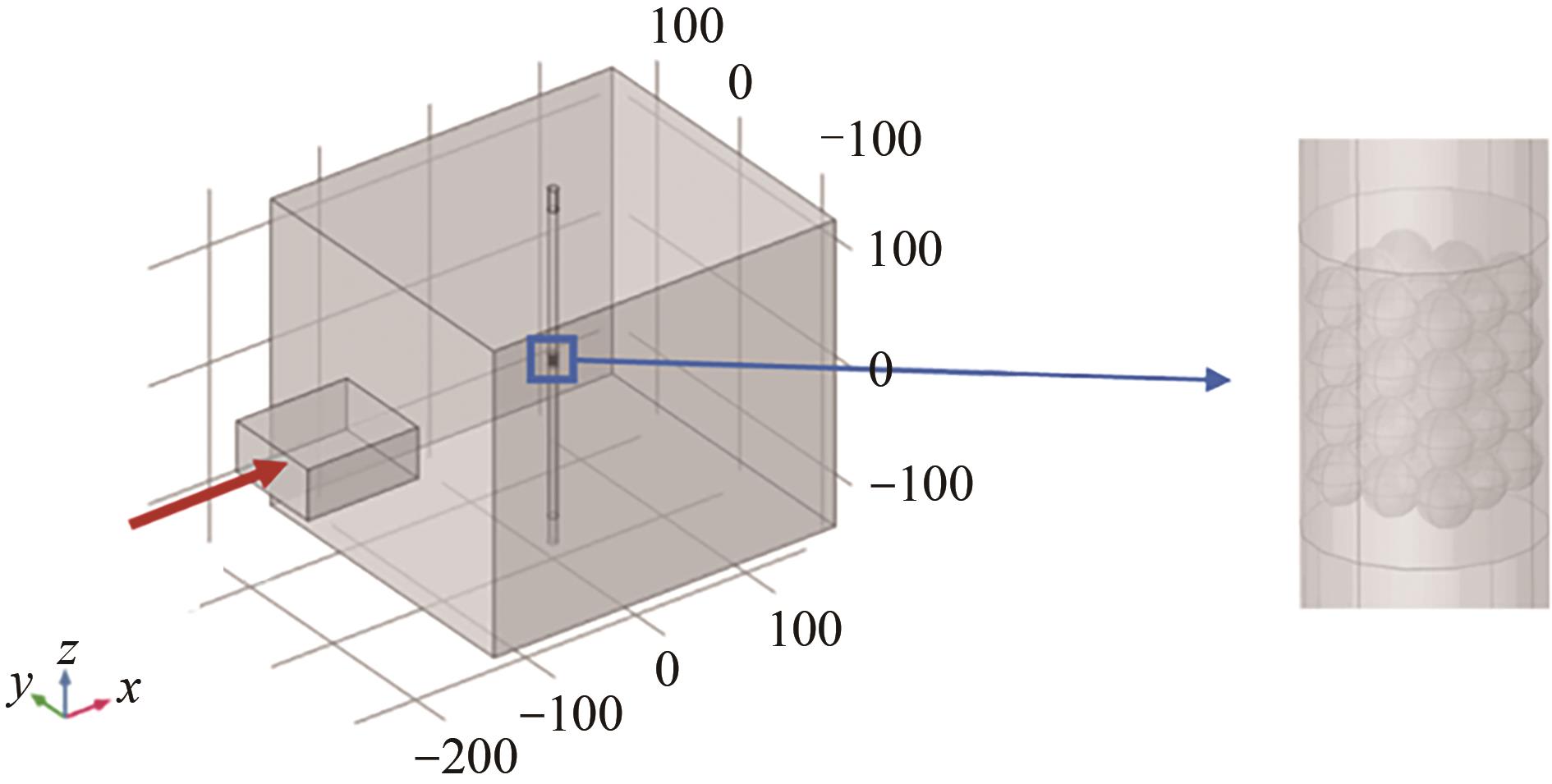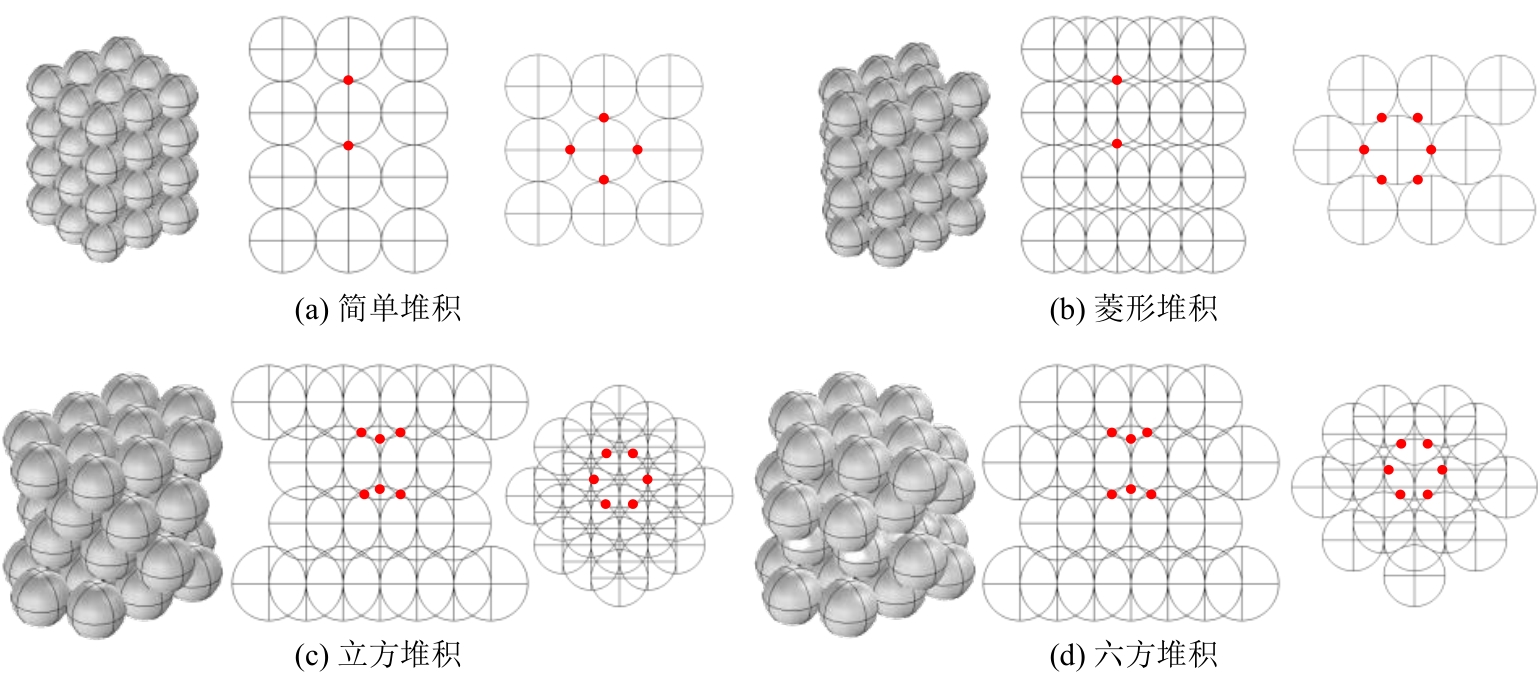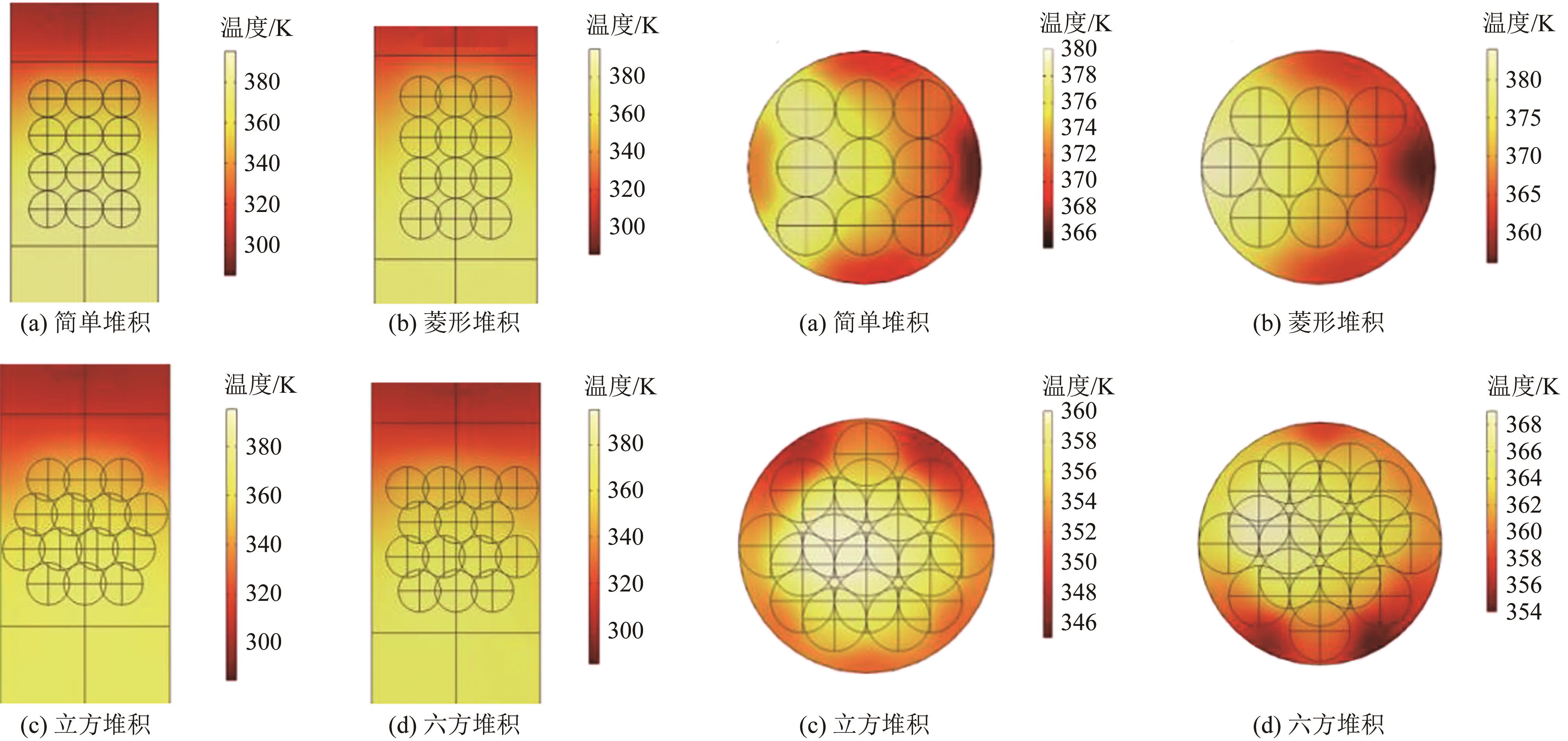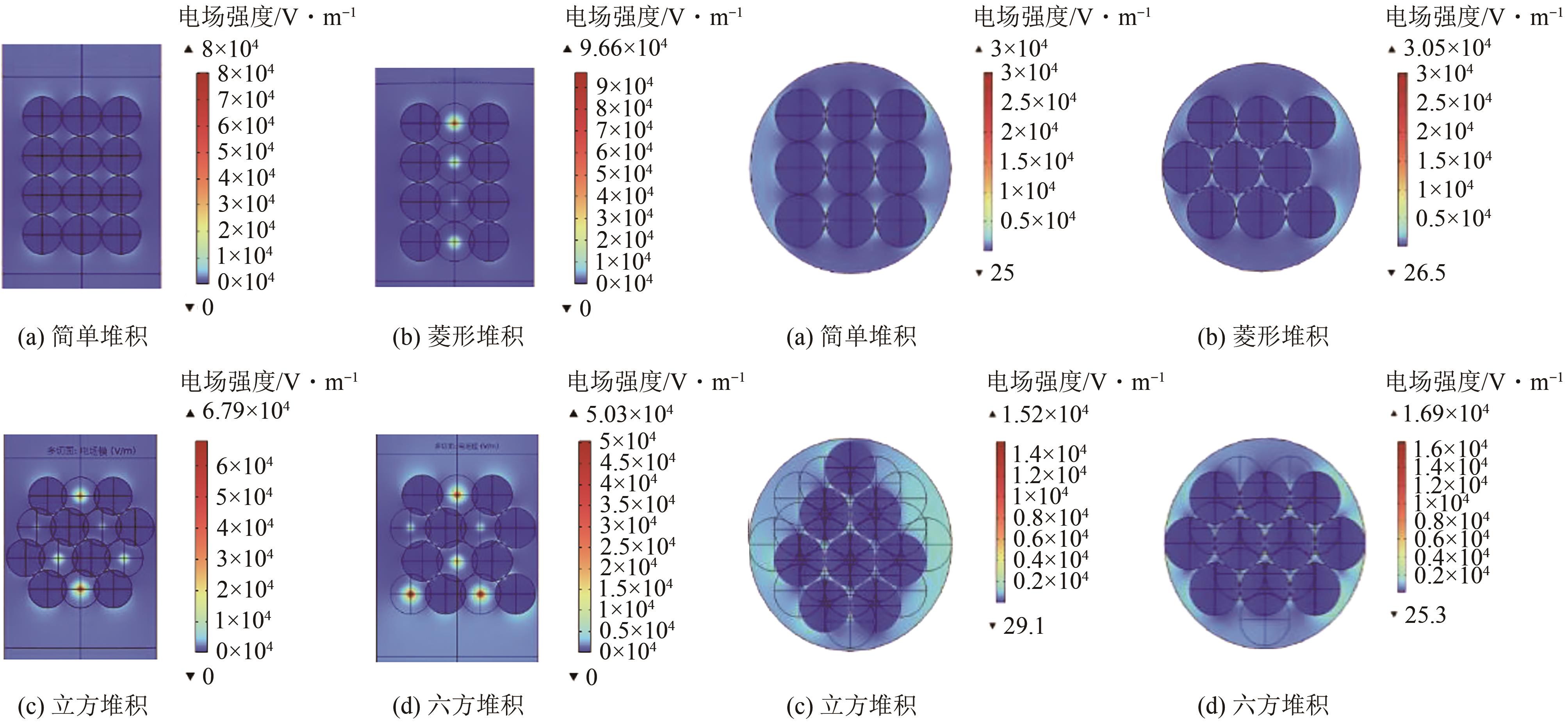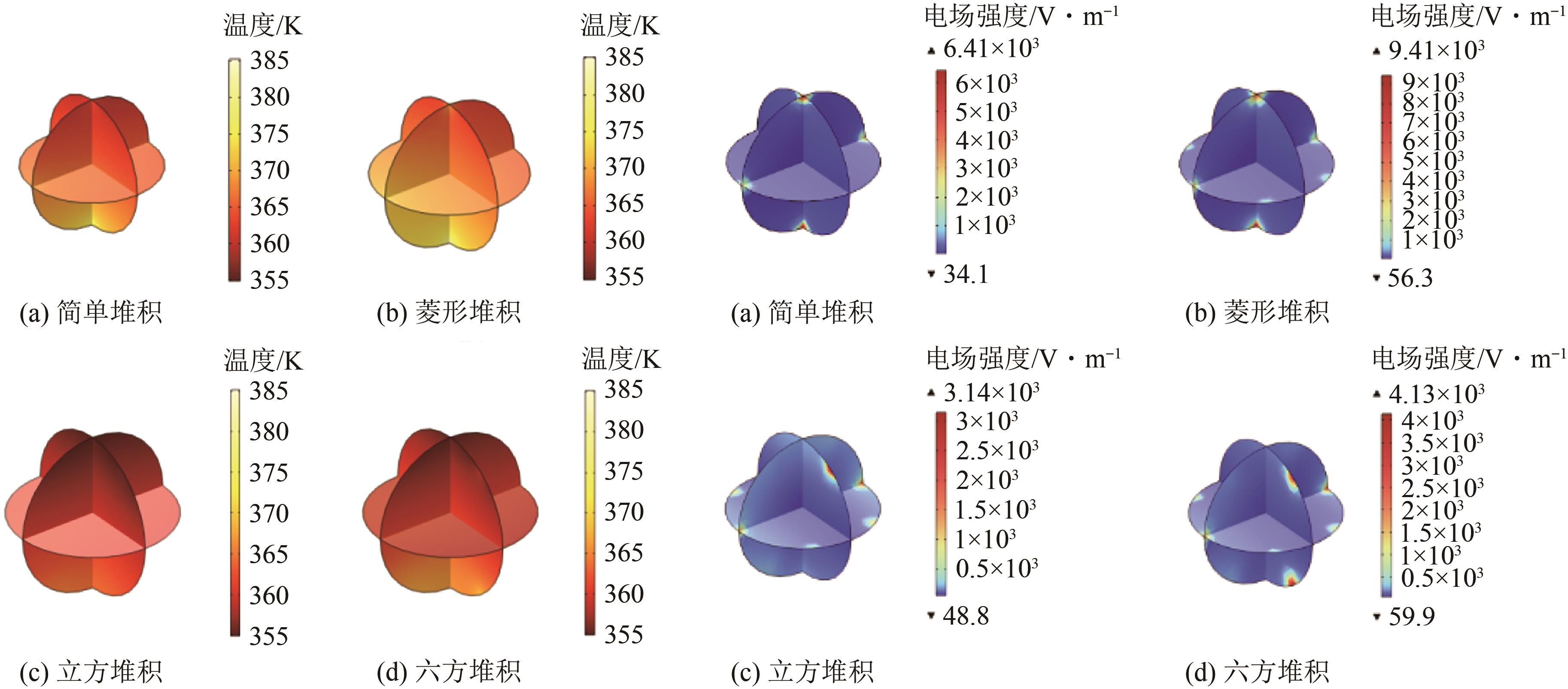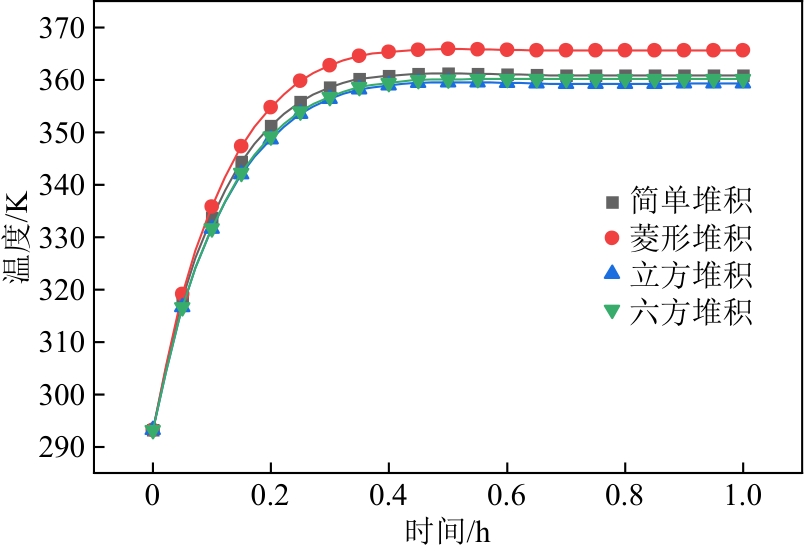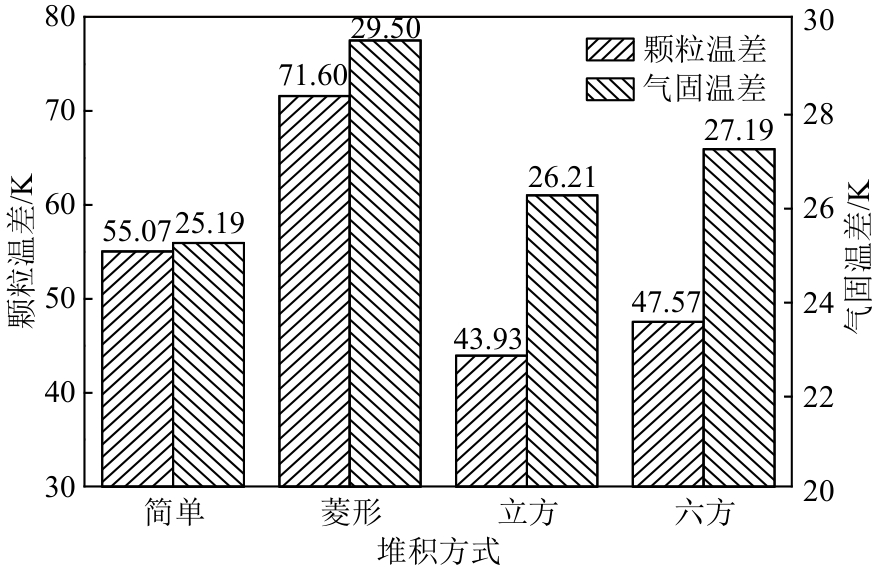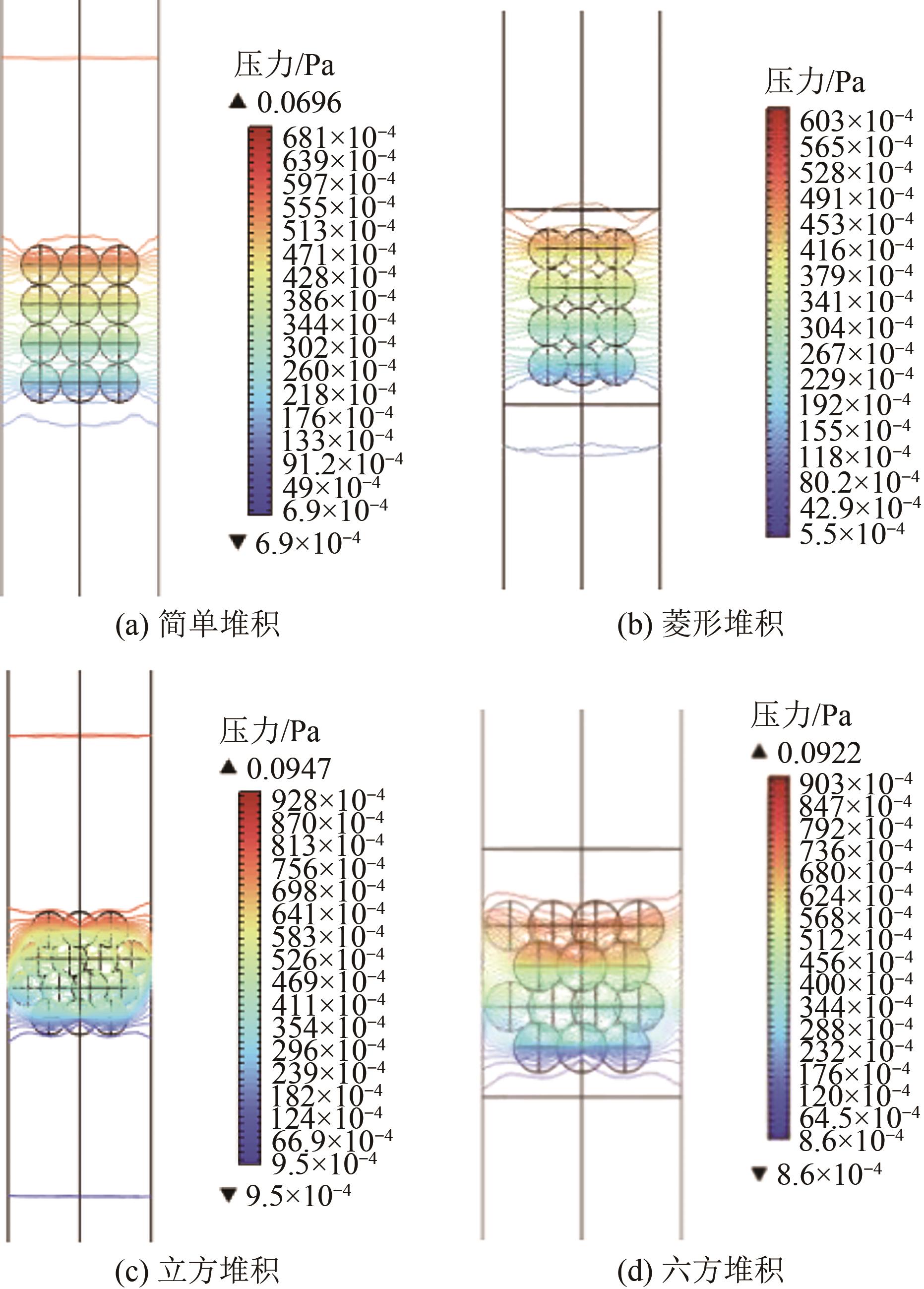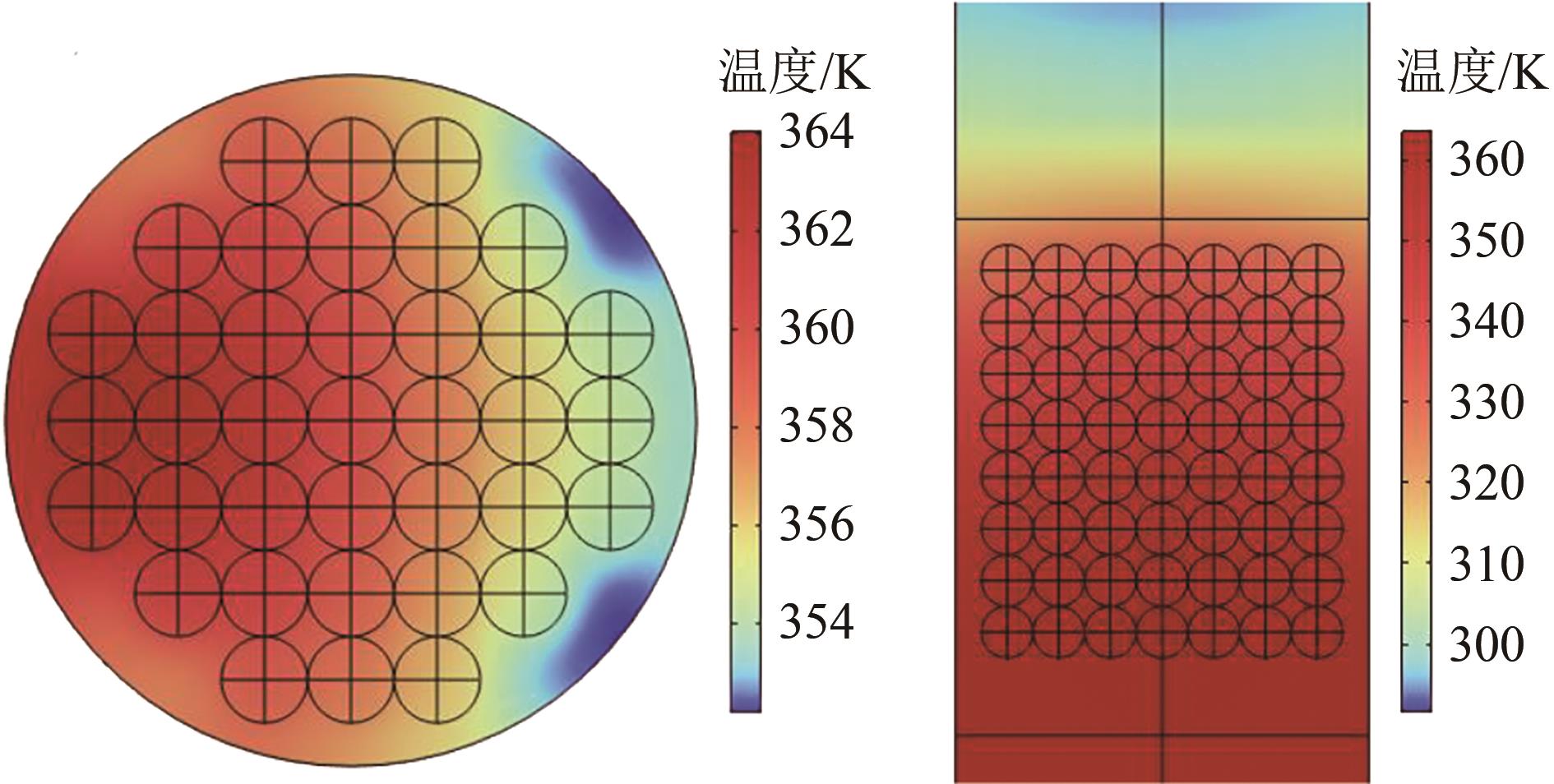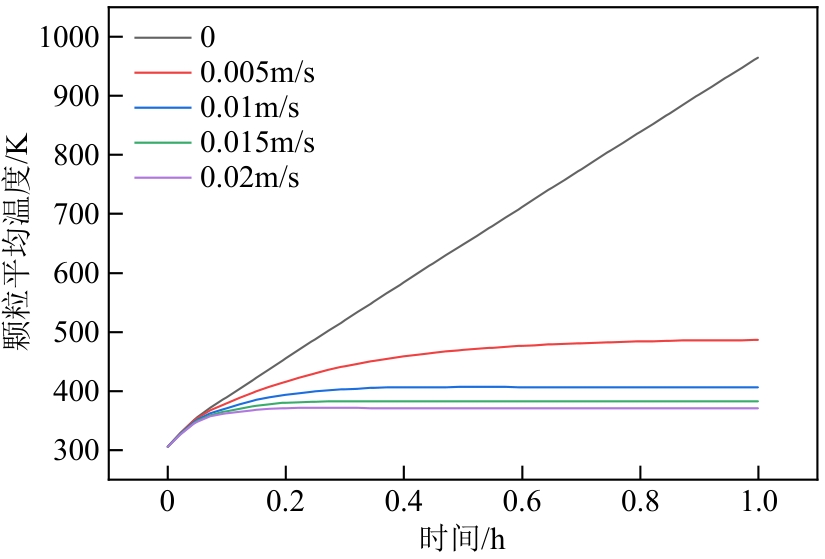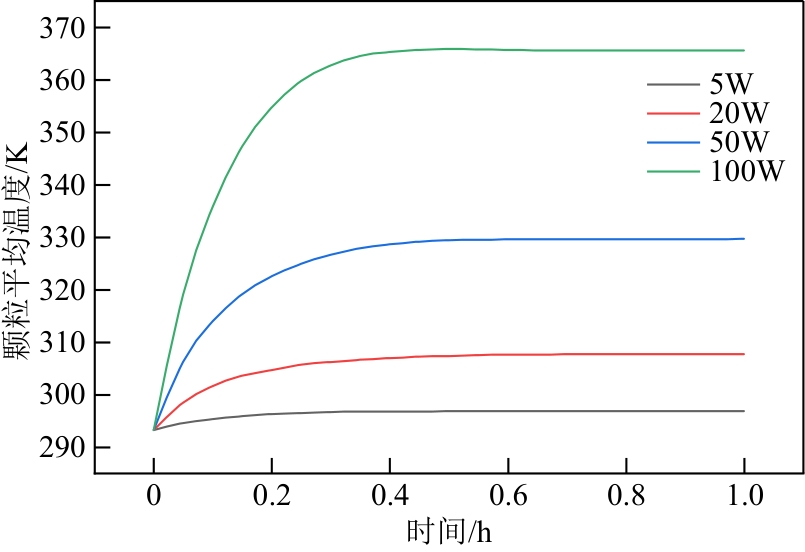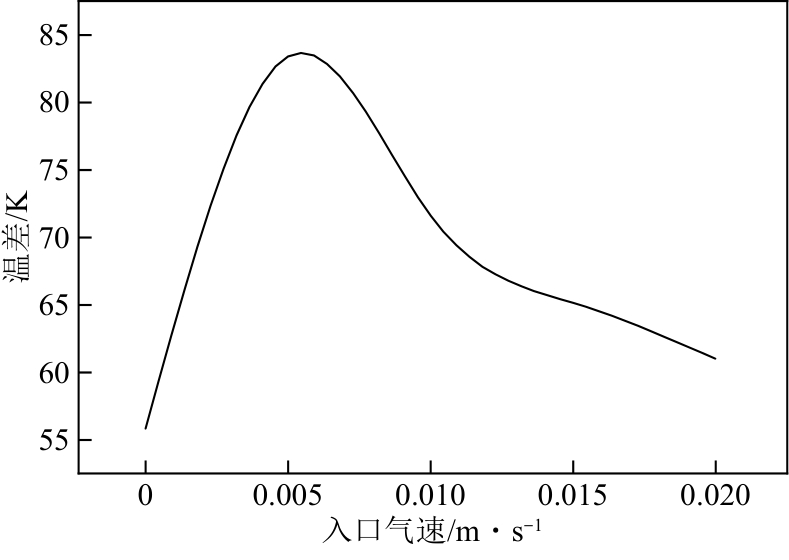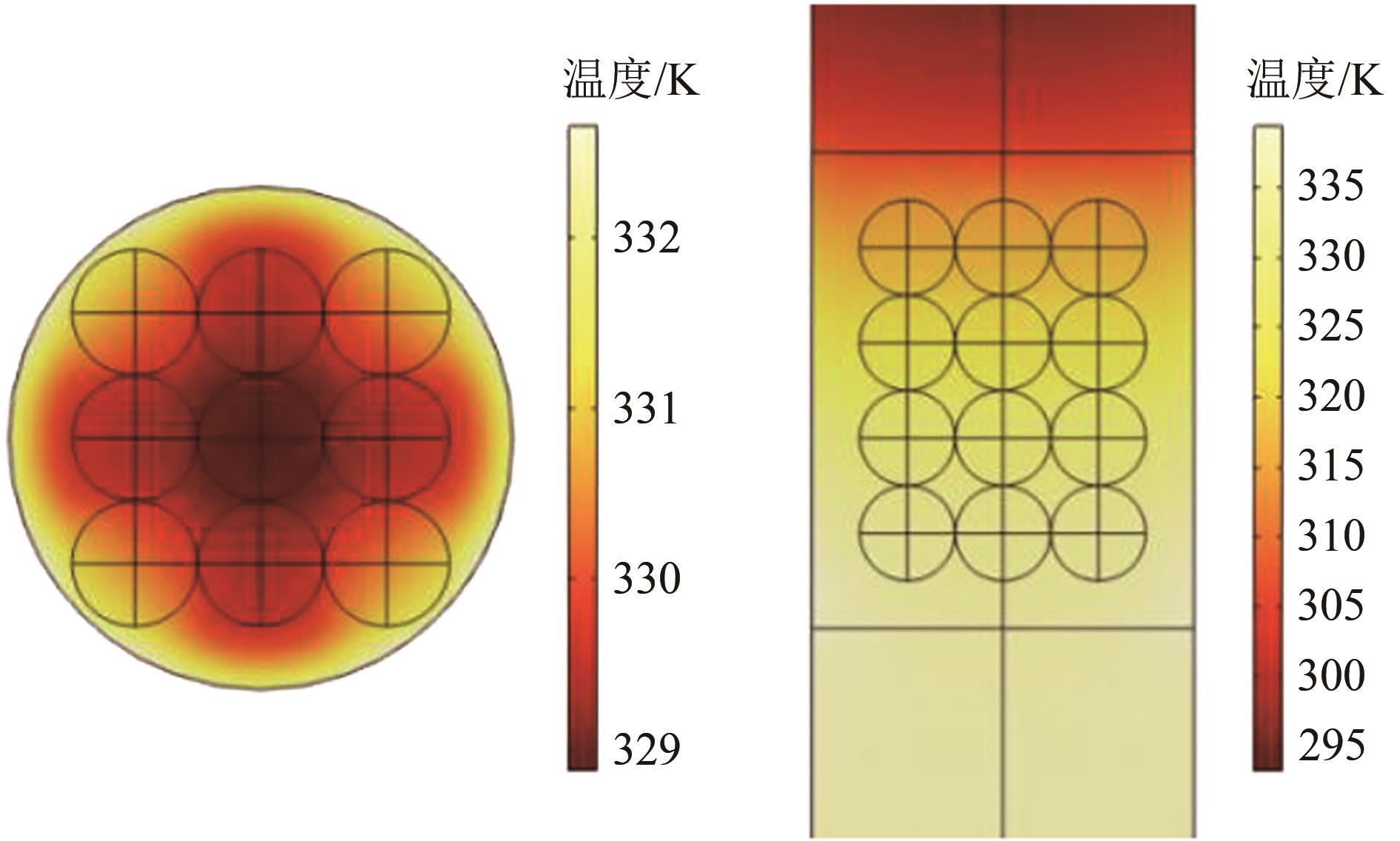Chemical Industry and Engineering Progress ›› 2025, Vol. 44 ›› Issue (1): 57-65.DOI: 10.16085/j.issn.1000-6613.2023-2221
• Chemical processes and equipment • Previous Articles Next Articles
Effect of catalyst particle arrangements on microwave heating
SUN Jianchen1( ), YANG Jie1, LI Jun2, SUN Huidong2, NIU Junmin1, LIAO Yifei1, REN Junying1, SHANG Hui1(
), YANG Jie1, LI Jun2, SUN Huidong2, NIU Junmin1, LIAO Yifei1, REN Junying1, SHANG Hui1( )
)
- 1.College of Chemical Engineering and Environment, China University of Petroleum (Beijing), Beijing 102249, China
2.PetroChina Planning and Engineering Institute, Beijing 100083, China
-
Received:2023-12-19Revised:2024-06-25Online:2025-02-13Published:2025-01-15 -
Contact:SHANG Hui
催化剂颗粒排列方式对微波加热效果的影响
孙建辰1( ), 杨捷1, 李军2, 孙会东2, 牛俊敏1, 廖逸飞1, 任俊颖1, 商辉1(
), 杨捷1, 李军2, 孙会东2, 牛俊敏1, 廖逸飞1, 任俊颖1, 商辉1( )
)
- 1.中国石油大学(北京)化学工程与环境学院,北京 102249
2.中国石油规划总院,北京 100083
-
通讯作者:商辉 -
作者简介:孙建辰(1999—),男,博士研究生,研究方向为微波过程强化。E-mail:sunsjc1@163.com。
CLC Number:
Cite this article
SUN Jianchen, YANG Jie, LI Jun, SUN Huidong, NIU Junmin, LIAO Yifei, REN Junying, SHANG Hui. Effect of catalyst particle arrangements on microwave heating[J]. Chemical Industry and Engineering Progress, 2025, 44(1): 57-65.
孙建辰, 杨捷, 李军, 孙会东, 牛俊敏, 廖逸飞, 任俊颖, 商辉. 催化剂颗粒排列方式对微波加热效果的影响[J]. 化工进展, 2025, 44(1): 57-65.
share this article
Add to citation manager EndNote|Ris|BibTeX
URL: https://hgjz.cip.com.cn/EN/10.16085/j.issn.1000-6613.2023-2221
| 排列方式 | 孔隙率 | 接触点数量 | 中心颗粒选择 | 颗粒数量 |
|---|---|---|---|---|
| 简单堆积 | 0.47 | 6 |  | 36 |
| 菱形堆积 | 0.39 | 8 |  | 36 |
| 立方堆积 | 0.25 | 12 | 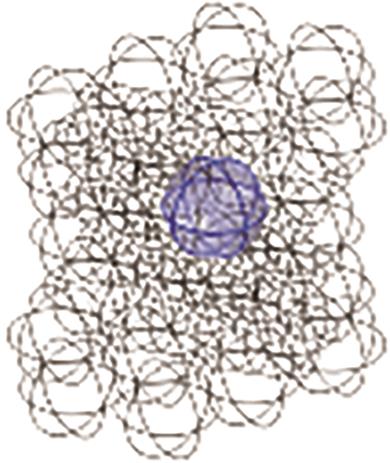 | 36 |
| 六方堆积 | 0.25 | 12 | 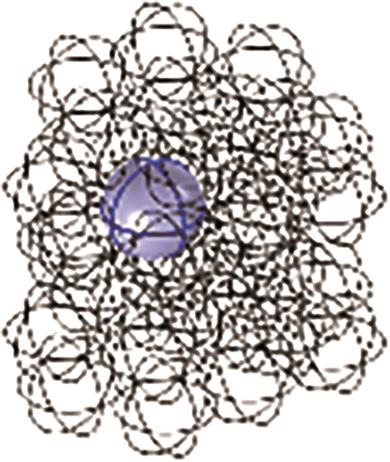 | 36 |
| 排列方式 | 孔隙率 | 接触点数量 | 中心颗粒选择 | 颗粒数量 |
|---|---|---|---|---|
| 简单堆积 | 0.47 | 6 |  | 36 |
| 菱形堆积 | 0.39 | 8 |  | 36 |
| 立方堆积 | 0.25 | 12 |  | 36 |
| 六方堆积 | 0.25 | 12 |  | 36 |
| 1 | 周颖, 周红军, 徐春明. 氢能的思考及发展路径判断和实践[J]. 化工进展, 2022, 41(8): 4587-4592. |
| ZHOU Ying, ZHOU Hongjun, XU Chunming. Exploration of the development path for the hydrogen energy[J]. Chemical Industry and Engineering Progress, 2022, 41(8): 4587-4592. | |
| 2 | 黄晟, 杨振丽, 李振宇. 氢产业链发展的路径分析[J]. 化工进展, 2024, 43(2): 882-893. |
| HUANG Sheng, YANG Zhenli, LI Zhenyu. Analysis of optimization path of developing China’s hydrogen industry[J]. Chemical Industry and Engineering Progress, 2024, 43(2): 882-893. | |
| 3 | 范以薇, 刘威, 李盈盈, 等. 有机液体储氢中全氢化乙基咔唑催化脱氢研究进展[J]. 化工学报, 2024, 75(4): 1198-1208. |
| FAN Yiwei, LIU Wei, LI Yingying, et al. Research progress on catalytic dehydrogenation of dodecahydro-N-ethylcarbazole as liquid organic hydrogen carrier[J]. CIESC Journal, 2024, 75(4): 1198-1208. | |
| 4 | 刘若璐, 汤海波, 何翡翡, 等. 液态有机储氢技术研究现状与展望[J]. 化工进展, 2024, 43(4): 1731-1741. |
| LIU Ruolu, TANG Haibo, HE Feifei, et al. Recent research and prospect of liquid organic hydrogen carries technology[J]. Chemical Industry and Engineering Progress, 2024, 43(4): 1731-1741. | |
| 5 | 李菊峰, 王璇, 郭勇, 等. 氢能发展的意义及储氢技术现状[J]. 化学工程与装备, 2023(1): 205-206. |
| LI Jufeng, WANG Xuan, GUO Yong, et al. Significance of hydrogen energy development and present situation of hydrogen storage technology[J]. Chemical Engineering & Equipment, 2023(1): 205-206. | |
| 6 | SUN Jianchen, SHANG Hui, MIAO Chao, et al. Microwave enhanced hydrogen production from liquid organic hydrogen carriers: A review[J]. Chemical Engineering and Processing: Process Intensification, 2023, 190: 109432. |
| 7 | 张媛媛, 赵静, 鲁锡兰, 等. 有机液体储氢材料的研究进展[J]. 化工进展, 2016, 35(9): 2869-2874. |
| ZHANG Yuanyuan, ZHAO Jing, LU Xilan, et al. Progress in liquid organic hydrogen storage materials[J]. Chemical Industry and Engineering Progress, 2016, 35(9): 2869-2874. | |
| 8 | GAMBINI Marco, GUARNACCIA Federica, MANNO Michele, et al. Thermal design and heat transfer optimisation of a liquid organic hydrogen carrier batch reactor for hydrogen storage[J]. International Journal of Hydrogen Energy, 2023, 48(96): 37625-37636. |
| 9 | KREUDER H, MÜLLER C, MEIER J, et al. Catalyst development for the dehydrogenation of MCH in a microstructured membrane reactor—For heat storage by a Liquid Organic Reaction Cycle[J]. Catalysis Today, 2015, 242: 211-220. |
| 10 | VAN HOECKE Laurens, KUMMAMURU Nithin B, POURFALLAH Hesam, et al. Intensified swirling reactor for the dehydrogenation of LOHC[J]. International Journal of Hydrogen Energy, 2024, 51: 611-623. |
| 11 | HEUBLEIN Norbert, STELZNER Malte, SATTELMAYER Thomas. Hydrogen storage using liquid organic carriers: Equilibrium simulation and dehydrogenation reactor design[J]. International Journal of Hydrogen Energy, 2020, 45(46): 24902-24916. |
| 12 | KREUDER H, BOELTKEN T, CHOLEWA M, et al. Heat storage by the dehydrogenation of methylcyclohexane—Experimental studies for the design of a microstructured membrane reactor[J]. International Journal of Hydrogen Energy, 2016, 41(28): 12082-12092. |
| 13 | SILVA Jornandes Dias, DE ABREU Cesar Augusto Moraes. Modelling and simulation in conventional fixed-bed and fixed-bed membrane reactors for the steam reforming of methane[J]. International Journal of Hydrogen Energy, 2016, 41(27): 11660-11674. |
| 14 | ZAYNALI Yousef, ALAVI-AMLESHI Seyed Mehdi. Comparative study of propane oxidative dehydrogenation in fluidized and fixed bed reactor[J]. Particulate Science and Technology, 2017, 35(6): 667-673. |
| 15 | LI Jinjian, TONG Fengya, LI Yi, et al. Dehydrogenation of dodecahydro-N-ethylcarbazole over spinel supporting catalyst in a continuous flow fixed bed reactor[J]. Fuel, 2022, 321: 124034. |
| 16 | USMAN Muhammad R, CRESSWELL David L, GARFORTH Arthur A. Mathematical modeling of a laboratory methylcyclohexane dehydrogenation reactor and estimation of radial thermal conductivities and wall heat transfer coefficients[J]. Chemical Engineering Communications, 2014, 201(9): 1240-1258. |
| 17 | BADAKHSH Arash, SONG Donghyun, MOON Seongeun, et al. COX-free LOHC dehydrogenation in a heatpipe reformer highly integrated with a hydrogen burner[J]. Chemical Engineering Journal, 2022, 449: 137679. |
| 18 | MIROLIAEI Ali Reza, SHAHRAKI Farhad, ATASHI Hossein. Computational fluid dynamics simulations of pressure drop and heat transfer in fixed bed reactor with spherical particles[J]. Korean Journal of Chemical Engineering, 2011, 28(6): 1474-1479. |
| 19 | CHEN Hao, SHI Yao, LI Zhao, et al. Structure-resolved CFD simulations to guide catalyst packing of selective NO reduction[J]. Chemical Engineering Journal, 2022, 446: 136888. |
| 20 | SHI Yao, CHEN Hao, CHEN Wenyao, et al. Effects of particle shape and packing style on ethylene oxidation reaction using particle-resolved CFD simulation[J]. Particuology, 2023, 82: 87-97. |
| 21 | Saurish DAS, DEEN Niels G, KUIPERS J A M. A DNS study of flow and heat transfer through slender fixed-bed reactors randomly packed with spherical particles[J]. Chemical Engineering Science, 2017, 160: 1-19. |
| 22 | STANKIEWICZ A. Energy matters: alternative sources and forms of energy for intensification of chemical and biochemical processes[J]. Chemical Engineering Research and Design, 2006, 84(7): 511-521. |
| 23 | ICHIKAWA Tomohiro, MATSUO Tomohiro, TACHIKAWA Takumu, et al. Microwave-mediated site-selective heating of spherical-carbon-bead-supported platinum for the continuous, efficient catalytic dehydrogenative aromatization of saturated cyclic hydrocarbons[J]. ACS Sustainable Chemistry & Engineering, 2019, 7(3): 3052-3061. |
| 24 | Xiangyu JIE, Sergio GONZALEZ-CORTES, XIAO Tiancun, et al. The decarbonisation of petroleum and other fossil hydrocarbon fuels for the facile production and safe storage of hydrogen[J]. Energy & Environmental Science, 2019, 12(1): 238-249. |
| 25 | SANZ-MORAL Luis Miguel, NAVARRETE Alexander, STURM Guido, et al. Release of hydrogen from nanoconfined hydrides by application of microwaves[J]. Journal of Power Sources, 2017, 353: 131-137. |
| 26 | HANEISHI Naoto, TSUBAKI Shuntaro, Eriko ABE, et al. Enhancement of fixed-bed flow reactions under microwave irradiation by local heating at the vicinal contact points of catalyst particles[J]. Scientific Reports, 2019, 9(1): 222. |
| 27 | HANEISHI Naoto, TSUBAKI Shuntaro, MAITANI Masato M, et al. Electromagnetic and heat-transfer simulation of the catalytic dehydrogenation of ethylbenzene under microwave irradiation[J]. Industrial & Engineering Chemistry Research, 2017, 56(27): 7685-7692. |
| 28 | BAI Xinwei, MULEY Pranjali D, MUSHO Terence, et al. A combined experimental and modeling study of Microwave-assisted methane dehydroaromatization process[J]. Chemical Engineering Journal, 2022, 433: 134445. |
| [1] | CHEN Kexin, LI Xi, CHANG Fucheng, WU Xiaoyi, LOU Jiacheng, LI Huixiong. Investigation on pressure drop and characteristics of flow-pattern transition of steam-water two-phase flows in helically coiled tubes [J]. Chemical Industry and Engineering Progress, 2025, 44(2): 613-624. |
| [2] | QI Shuaijie, HUANG Yaji, XU Pengcheng, QI Jingwei, LI Zhiyuan, SHI Hao, ZHAO Jiaqi, GAO Jiawei, LIU Jun, ZHANG Yuyao. Pyrolysis of waste wood building formwork and typical biomass: comparison of product distribution and properties [J]. Chemical Industry and Engineering Progress, 2025, 44(2): 1120-1128. |
| [3] | YU Hai, LUAN Zhiyong, JI Yipeng, AN Shenfa, CHEN Jiaqing, SI Zheng, REN Qiang, SUN Fengxu, SONG Zerun. Calculation method and impact analysis of short-circuit flow in dynamic hydrocyclone [J]. Chemical Industry and Engineering Progress, 2025, 44(1): 135-144. |
| [4] | QIAO Lei, ZHANG Yaxin, WEI Bo, RAN Wenshen, MA Jingrong, WANG Feng. Optimization of burner layout parameters and operating parameters of oxy-thermal entrained-flow calcium carbide reactor [J]. Chemical Industry and Engineering Progress, 2025, 44(1): 145-157. |
| [5] | XING Lei, ZHOU Xiaoqing, JIANG Minghu, ZHAO Lixin, LI Xinya, CHEN Dehai. Motion behavior and deformation characteristics of discrete oil droplets in a sudden contraction and sudden expansion round pipe [J]. Chemical Industry and Engineering Progress, 2025, 44(1): 27-37. |
| [6] | CAI Kainan, CHEN Jianyong, CHEN Ying, LUO Xianglong, LIANG Yingzong, HE Jiacheng. Thermodynamic performance of zeotropic mixtures in liquid-vapor separation plate condenser [J]. Chemical Industry and Engineering Progress, 2025, 44(1): 48-56. |
| [7] | ZHU Rukai, CHENG Xiao, LIU Jinya, WU Huiying. Flow and heat transfer characteristics and multi-objective optimization of pin-fin multi inclined jet microchannels [J]. Chemical Industry and Engineering Progress, 2025, 44(1): 86-99. |
| [8] | ZHANG Tianhao, LI Shuangxi, JIA Xiangji, HU Dingguo, CUI Ruizhuo, LI Shicong. Analysis of the effect of thermal deformation and friction wear of reinforced DLC film on the end face of high-speed mechanical seals [J]. Chemical Industry and Engineering Progress, 2024, 43(S1): 121-133. |
| [9] | MAO Ningxuan, WAN Xiaowei, JU Jie, HU Yanjie, JIANG Hao. Numerical simulation and structural optimization of flow field in industrial gas-solid fluidized beds based on CFD-PBM [J]. Chemical Industry and Engineering Progress, 2024, 43(S1): 13-20. |
| [10] | ZHANG Qing, HUANG Lihao, TAO Leren, ZHU Tianyi, JIN Yunfei. Experimental on the flow boiling heat transfer characteristics of R513A insides horizontal tubes with different thread structures [J]. Chemical Industry and Engineering Progress, 2024, 43(S1): 134-143. |
| [11] | SU Yao, CHEN Zhanxiu, YANG Li, XING Hewei, HU Hecang, LI Yuanhua. Effect of heat source temperature on flow heat transfer in asymmetric nanochannels [J]. Chemical Industry and Engineering Progress, 2024, 43(S1): 144-153. |
| [12] | ZHANG Weiye, ZHU Xiaowu, LUO Yonghao, WANG Zhi. Numerical simulation of mixing performance of composite phyllotaxy microfluidic channel [J]. Chemical Industry and Engineering Progress, 2024, 43(S1): 154-165. |
| [13] | YIN Shaowu, HUANG Ruoxiao, ZAN Xiaojun, TONG Lige, LIU Chuanping, WANG Li. Design of phase-change heat and energy storage system based on CPCM hexagonal and simulation of heat storage and release [J]. Chemical Industry and Engineering Progress, 2024, 43(S1): 243-254. |
| [14] | YANG Huimin, DU Jiali, QUAN Yawen, WU Shengxiao, JIN Jiao, WU Feng. CFD simulation investigation of heat transfer characteristics in a downer bed with side nozzle [J]. Chemical Industry and Engineering Progress, 2024, 43(S1): 32-42. |
| [15] | ZHAO Jilong, MA Yinghua, HUANG Guoqing, SHEN Mingyu, CHEN Hongxia. Optimization design of cesium heat pipe based on orthogonal test [J]. Chemical Industry and Engineering Progress, 2024, 43(S1): 94-105. |
| Viewed | ||||||
|
Full text |
|
|||||
|
Abstract |
|
|||||
